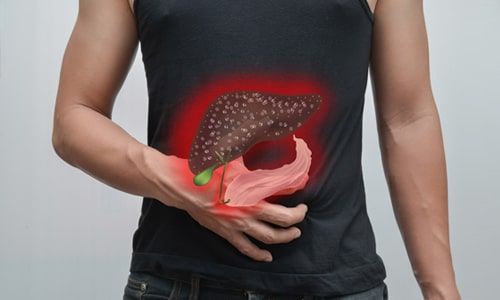
Gallbladder Cancer
What is Gallbladder and Bile Duct Cancer?
Tumors can be detected in the gallbladder and bile duct in some individuals. Tumors detected in this region are mostly malignant and can turn into cancer over time. Gallbladder and Bile Duct Cancer, which has an important place among the cancers of the digestive system, is one of the types of cancer that is difficult to diagnose.
The gallbladder, located in the lower part of the liver and adjacent to the liver, is an important digestive organ. The bile produced by the liver is poured into the gallbladder through the ducts and transferred to the small intestine when necessary after being stored there for a while. If a tumor occurs in the gallbladder where bile is stored within this working mechanism, it is called Gallbladder Cancer. If tumor formation occurs in the bile ducts extending from the liver to the small intestine, it is called Bile Tract Cancer – Cholangiocarcinoma .
What are the Symptoms of Gallbladder and Bile Duct Cancer?
Gallbladder and Bile Duct Cancer is one of the most difficult types of cancer to diagnose at an early stage. This disease presents itself with some important symptoms. When tumors begin to form, the most common symptoms are listed as follows;
- Painless jaundice,
- Intense itching on the skin,
- Nausea and vomiting,
- Unexplained abdominal pain
- Digestive problems,
- Unexplained weight loss
- Dark urine,
- White stool,
- Fire,
- It is the formation of a mass in the umbilical region.
The first and most important symptom of gallbladder and bile duct cancer is painless jaundice. This disease mostly occurs in advanced ages and develops rapidly without showing symptoms in the early stages.
Why Does Gallbladder and Bile Duct Cancer Occur?
The causes of tumor formation in the gallbladder and bile duct cannot be determined precisely. However, some risk factors that cause tumor cell formation are known. The risk factors that cause gallbladder and bile duct cancer are listed as follows;
- Gallbladder stone,
- Gallbladder polyps,
- Liver and biliary tract parasites,
- Cirrhosis disease ,
- Hepatitis B and hepatitis C disease,
- Caroli syndrome,
- Choledochal cyst,
- Obesity,
- Advanced age,
- Heavy smoking and alcohol consumption
- Ulcerative colitis
- Some intestinal diseases such as Crohn's disease.
The risk of gallbladder and bile duct cancer is higher in older individuals who are faced with these risk factors.
Diagnosis of Gallbladder and Bile Duct Cancer
Jaundice, which is the most important symptom of gallbladder and bile duct cancer, has a great importance in the diagnosis of this disease. Patients who start to develop tumors in the bile duct in the gallbladder apply to the doctor with complaints such as jaundice, vomiting and nausea caused by these tumors. Primarily, it will not be possible to detect tumors in the gallbladder during physical examinations. Some tests and imaging techniques are used to detect these tumors.
Blood tests are used in the diagnosis of gallbladder and bile duct cancer. Especially the bilirubin level is monitored during the diagnosis phase. Along with blood tests, it is checked whether there is a tumor in the area with the support of ultrasound. However, biopsy is performed for definitive diagnosis.
Gallbladder and Bile Duct Cancer Treatment
Cancer treatment , the stage of the cancer, the age of the patient, the location of the tumor and other health problems, if any, are of great importance. Gallbladder and bile duct cancer are mostly detected in advanced stages.
If the treatment of gallbladder and bile duct cancer can be detected in the early stages, it is possible to remove cancerous cells with surgical methods. However, when it is detected in advanced stages that surgery is not possible, the process continues with chemotherapy and radiotherapy applications.
Open or closed surgical methods can be applied if the guest bladder and bile duct tumor is not in an advanced stage and is in a process where surgery can be performed.
